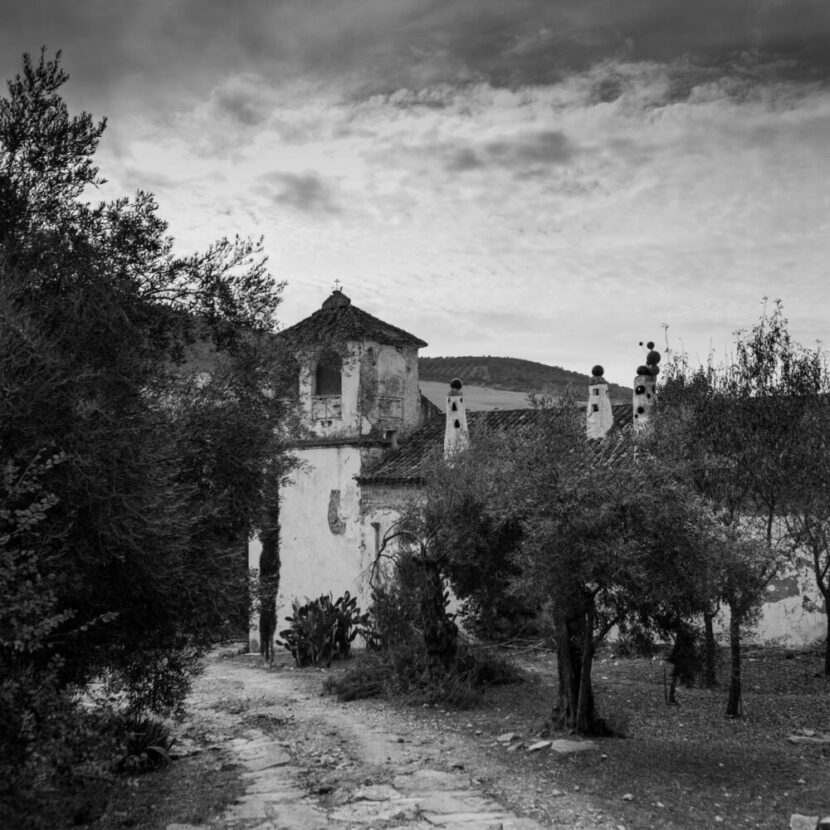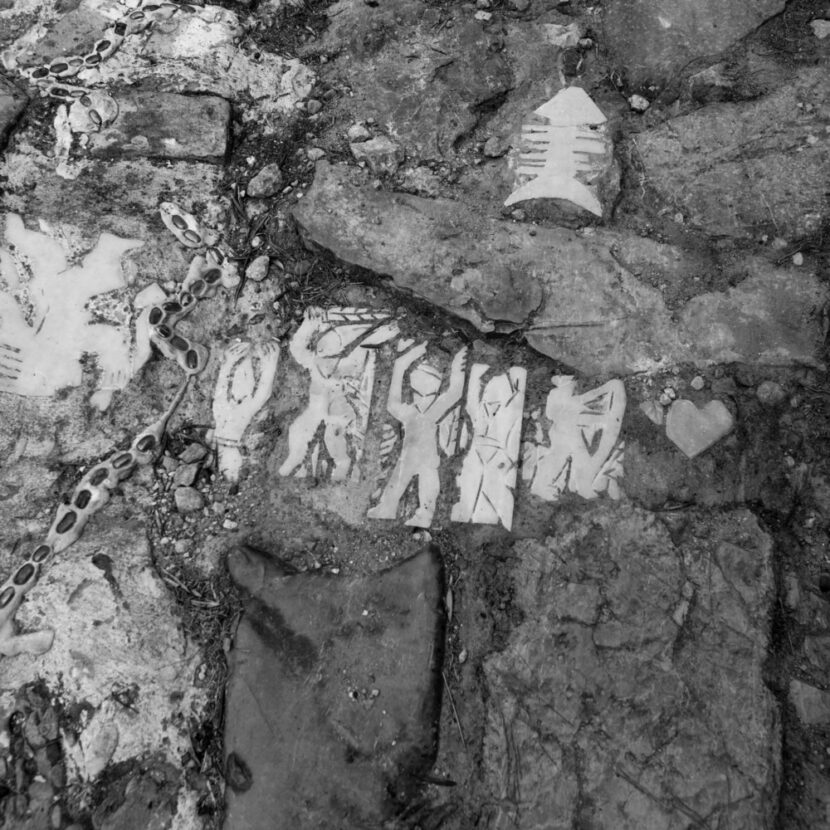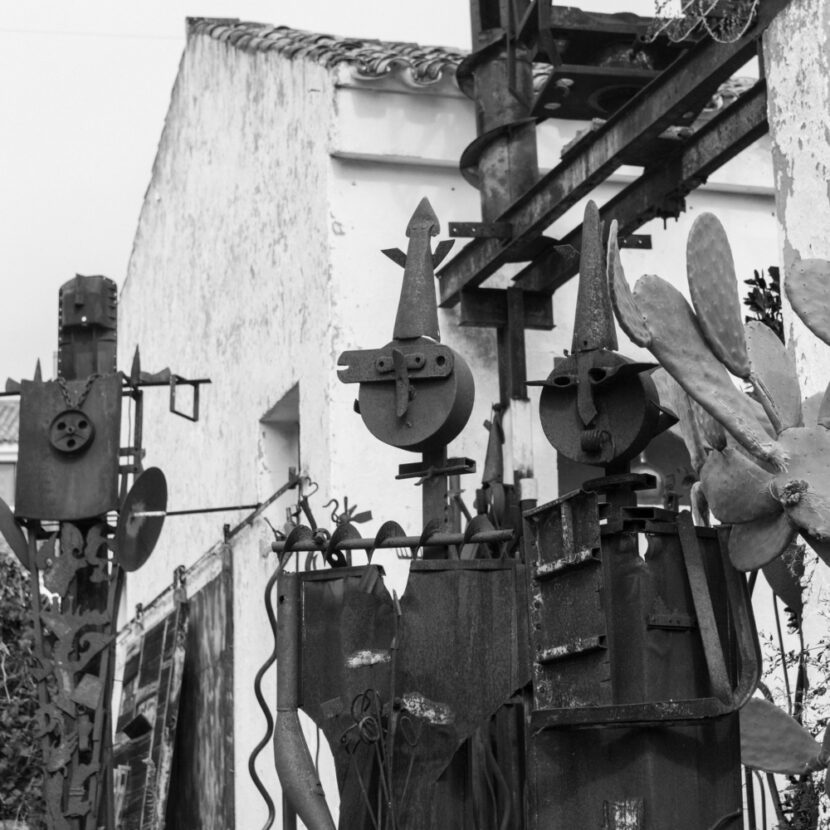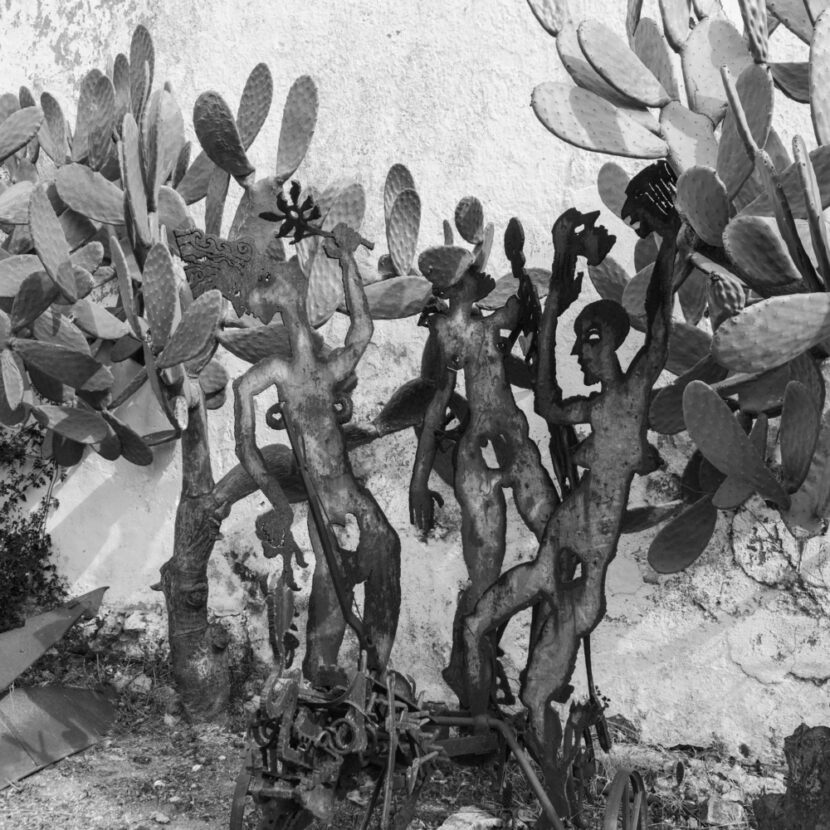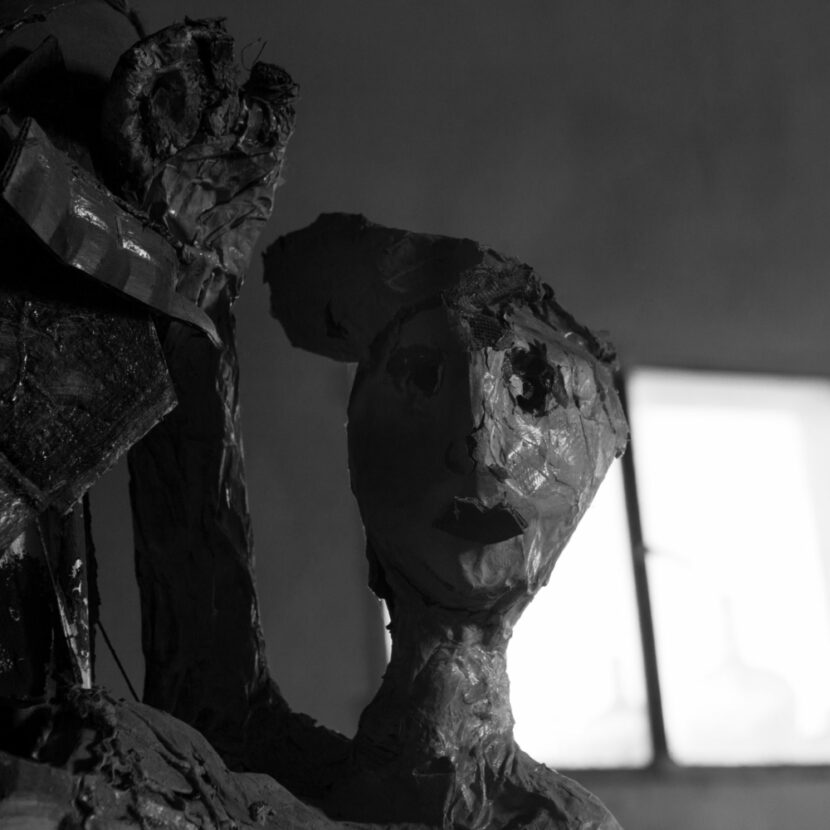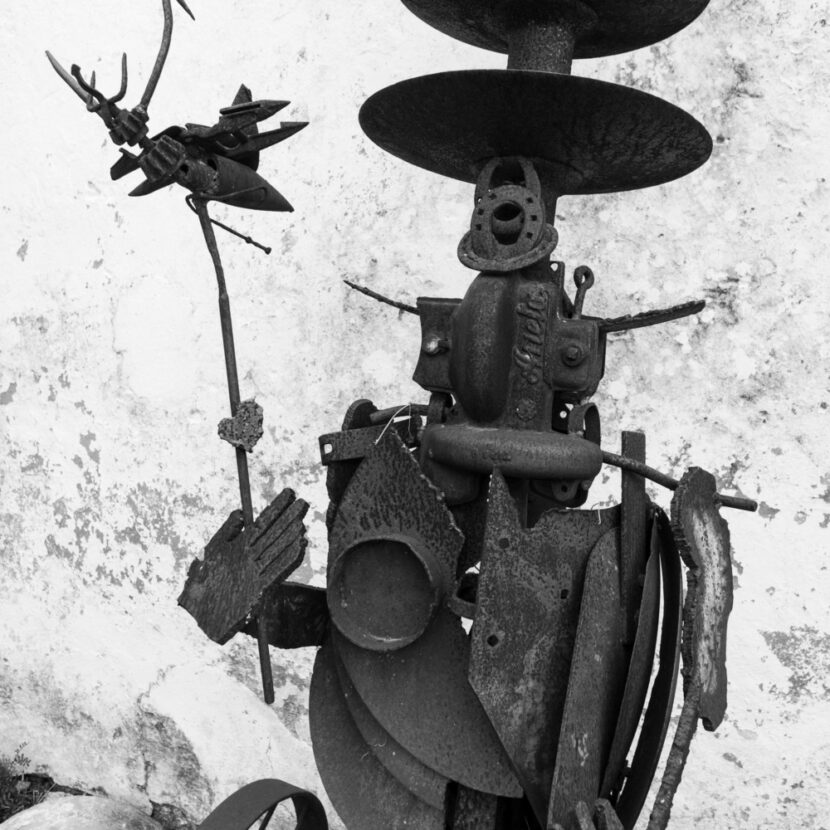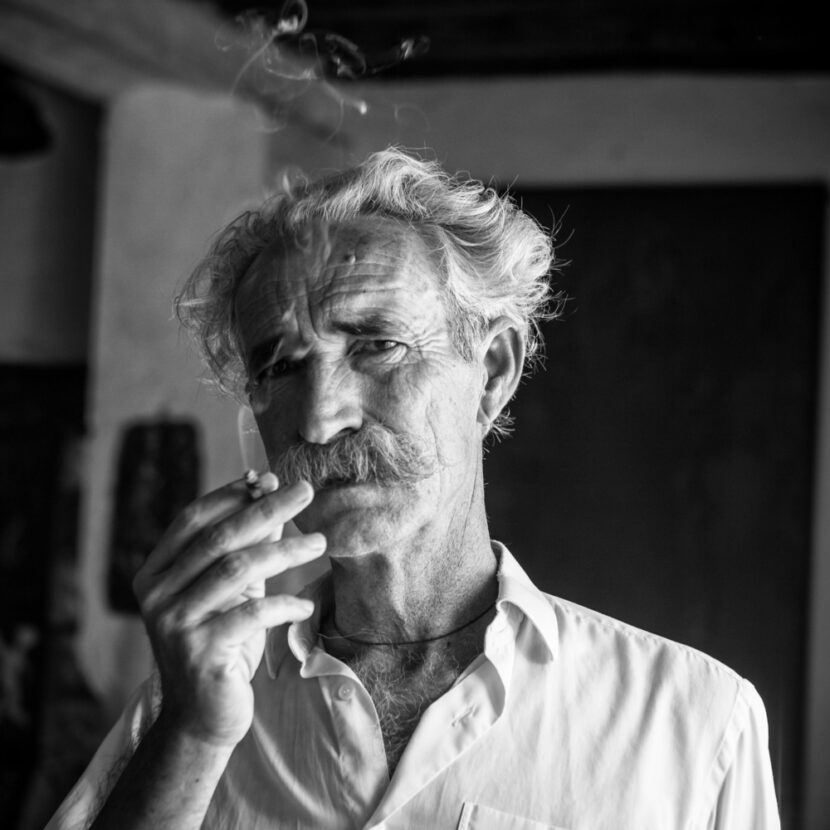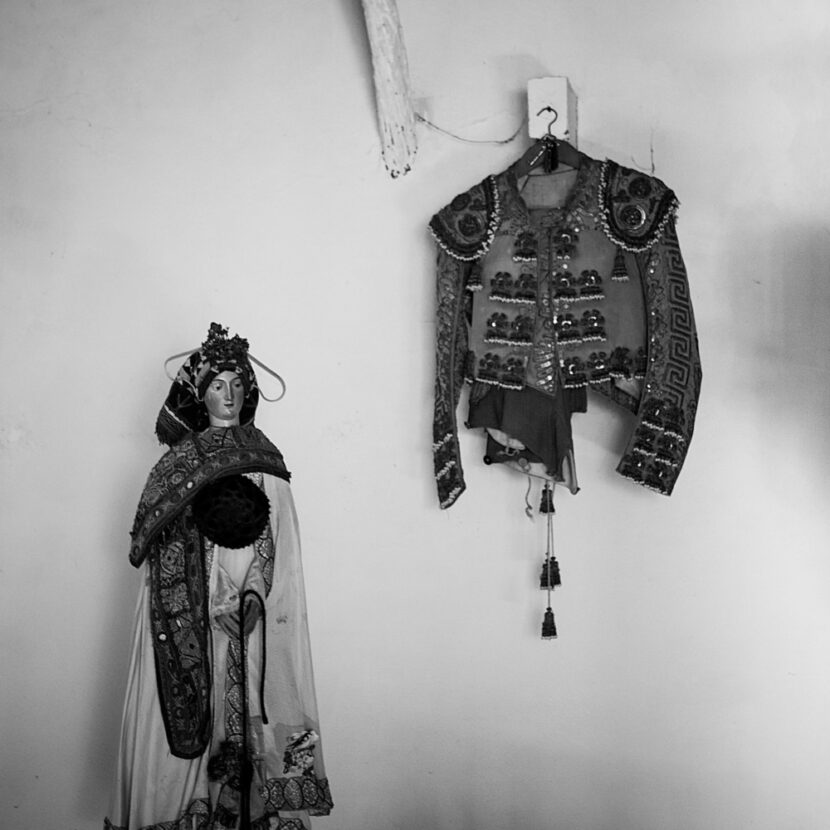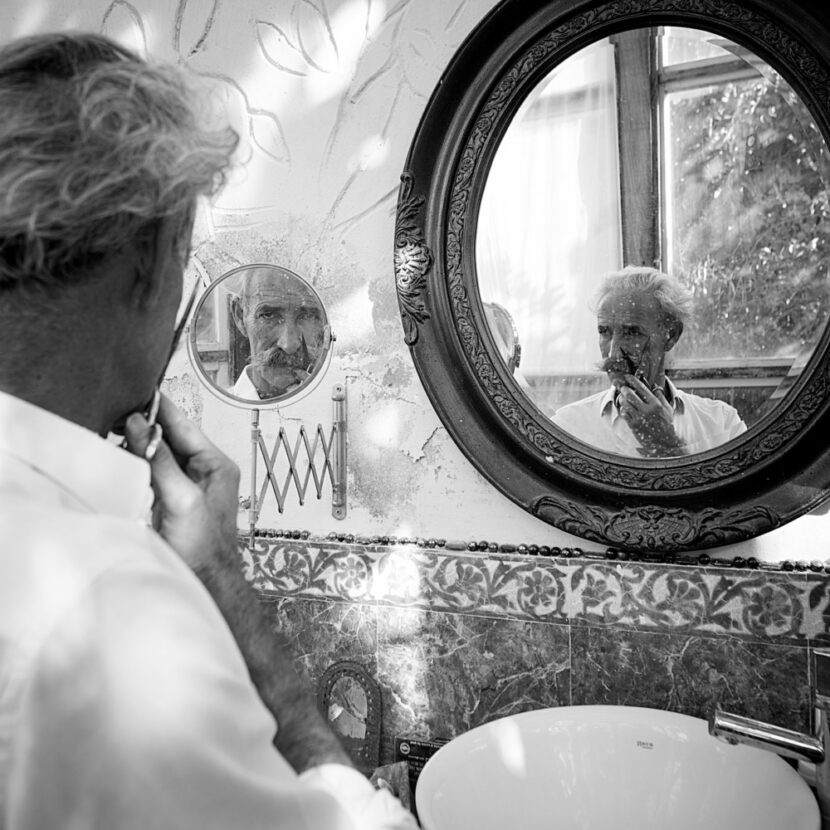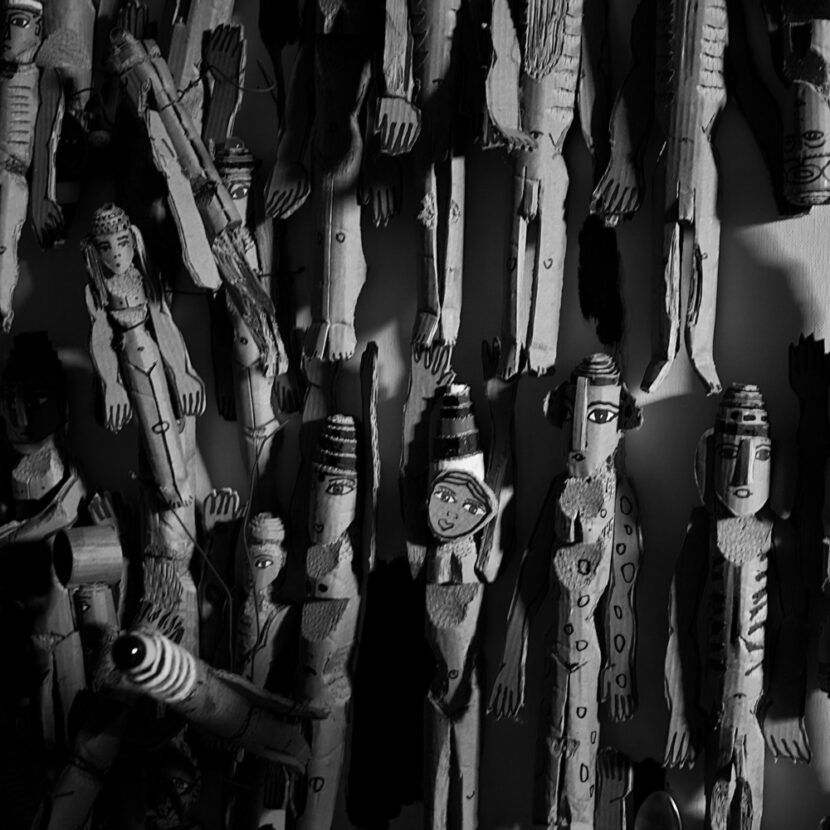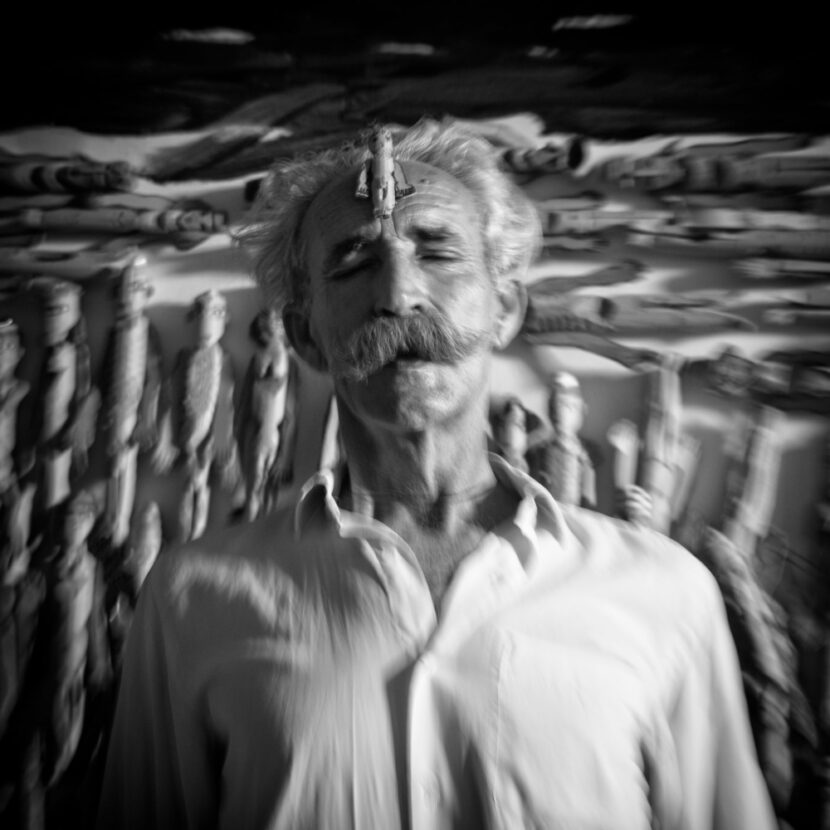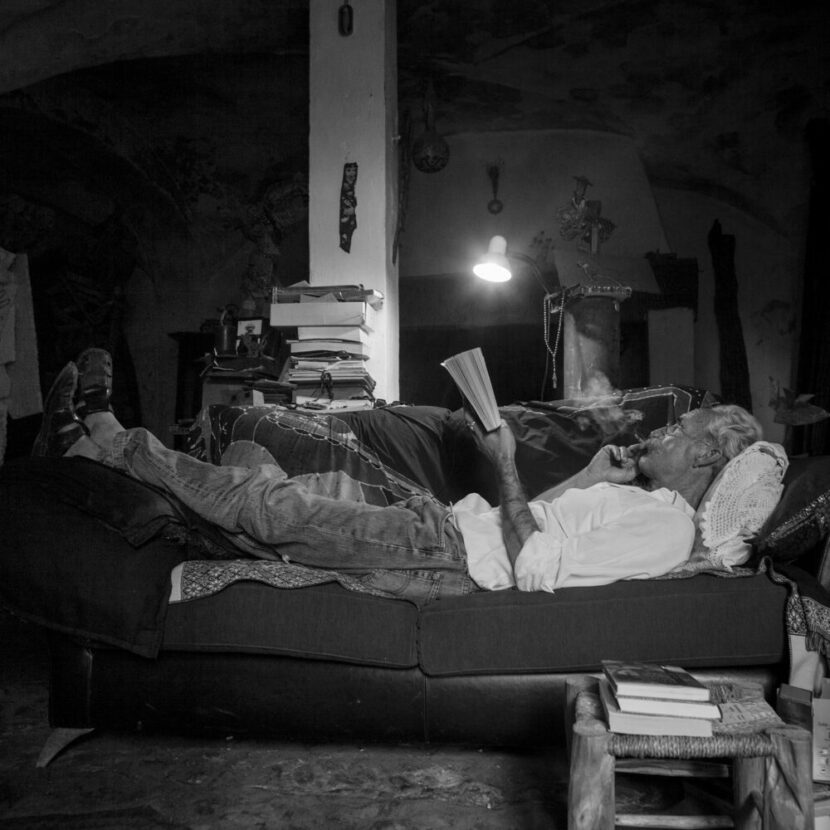The trance of the little man
«I am mad for reading. I’ve been reading books for months until I get the crazy and start building.» José Hinojo
Those words were engraved in my head the day I met José Hinojo, a peculiar multidisciplinary artist with a certain resemblance to Don Quixote who has given up his personal battle against the «giants» to live in a 16th century oil mill, recovered from oblivion in Prado del Rey.
The entrance to the mill is guarded by a faithful army of iron sentry giants punished by the passage of time. They are passive observers and friends of the birds.
An enormous wrought iron gate leads to the interior garden, an enigmatic and beautiful place that could be the appropriate stage for the shooting of a new film by the quirky Tim Burton.
As you enter, there is a large fireplace behind a sofa, and next to the sofa some books are placed on an old stool, and many others are shaped like columns. A rosary hangs from the lamp that illuminates this reading area, swaying in the air currents.
José offers me a cigarette while his is being lit. The first puff is paused and the smoke rises, offering a unique dance show in the shadows. The scant light coming in at that moment comes from a window crowded with spider webs.
He shows me the workshop, which is also his home, where he keeps the works that are most vulnerable to climate change scattered like a large cardboard mural, where elongated human figures are mixed in a chaotic scene.
Inside are scattered his works: large cardboard wall where different human figures are intermingled; wooden sculptures and painted cardboard attached to glass, metal or other materials; oil, acrylic or watercolor and graphite drawings in which the artist’s admiration can be seen by the olive tree.
As if he were a magician, he pulls out a small anthropomorphic figure from nowhere which he sticks to his forehead and closes his eyes. The low speed of the camera shutter makes that little cardboard man go into a trance, as if he had been given an injection of life. (The Little Man’s Trance, as I titled the main photo)
Hinojo carves wooden sculptures and makes figures out of cardboard. He uses glass, metal or stones to complete some of his work. He also paints in oil, acrylic or watercolor, sketches in graphite and in just one minute he skillfully draws an imaginary face using a permanent marker.
Admire the millenary olive tree as the ancient civilizations did, with its twisted trunk and its valuable fruit, and you can see several of its works.
The universe is vast, infinite and mysterious, similar only to another great universe called Imagination.
